![]()
![]()
![]()
Use LEFT and RIGHT arrow keys to navigate between flashcards;
Use UP and DOWN arrow keys to flip the card;
H to show hint;
A reads text to speech;
27 Cards in this Set
- Front
- Back

What is conformity? |
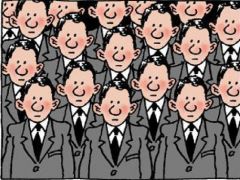
When we change our behaviour or opinions to match more closely to the behaviours/opinions of a majority of others due to real or imagined pressure.
|
|

What is an example of conformity? |

Fashion trends e.g. buying the latest iPhone or air Jordan’s.
|
|

What did the research by Sherif into conformity do? |

a. Sherif conducted a laboratory experiment where he used the Autokinetic Effect in which a stationary dot of light on the ceiling appears to move when shown in a very dark room.
b. Participants who were male white Americans had to say out loud how far they thought the dot moved. |
|

What did the research into conformity when people where alone by Sherif find? |

Sherif found that when alone, estimates ranged from 1 to 10 inches.
|
|

What did the research into conformity when people where in groups by Sherif find? |

When viewed in groups over a series of trials, (stating estimates out loud, but with no discussion), judgements after each trial became closer and closer: a group norm emerged.
|
|

What did the research into conformity when people where shown the light again alone by Sherif find? |

Sherif also found that when each participant saw the light alone again afterwards, their estimate remained close to the group norm. They had conformed and changed their estimates when alone afterwards.
|
|

What is the advantage of the research by Sherif? |

Having more than 1 trial increased the reliability of the study (alone, with the group and then alone again).
|
|

What are the disadvantages of the research by Sherif? |

They may not have been a group. Could they really be considered a group when there is no real interaction or bond between them?
There was no correct answer, so the experiment may not have been measuring proper conformity. Another psychologist Solomon Asch believed that the participants had conformed to a group norm because they simply didn’t know what the correct answer was; this was because it was quite a difficult ambiguous task. The ‘group’ used consisted of three people. They may not have considered themselves to be a group. |
|

What did the research by Asch into conformity do? |

Asch conducted an experiment in which there was an obvious answer to a line judgment task. If the participant gave an incorrect answer it would be clear that this was due to group pressure.
|
|
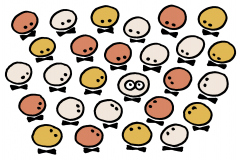
What was the aim of Asch's study into conformity? |
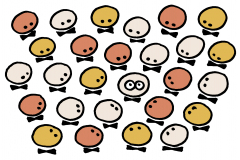
Aim: Solomon Asch wanted to see if social pressure from a majority group could affect a person to conform.
|
|

How did Asch structure his participants for the study into conformity? |

Asch used a lab experiment to study conformity, whereby 50 male students from Swarthmore College in the USA participated in a ‘vision test’. Using a line judgment task, Asch put a naive participant in a room with seven confederates (pretend participants).
|
|

What where the confederates suppose to do to change the naive participants judgments? |

The confederates had agreed in advance what their responses would be when presented with the line task. The real participant did not know this and was led to believe that the other seven participants were also real participants like themselves.
There were 18 trials in total and the confederates gave the wrong answer on 12 trails (called the critical trials). |
|
|
How was Asch's study now conducted? |
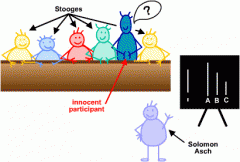
Each person in the room had to state aloud which comparison line (A, B or C) was most like the target line. The answer was always obvious. The real participant sat at the end of the row and gave his or her answer last.
|
|

What did the research by Asch into conformity find? |

He found that about one third (32%) of the participants who were placed in this situation went along and conformed with the clearly incorrect majority on the critical trials.
|
|
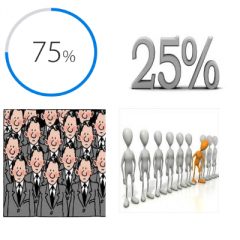
What else did the research by Asch into conformity find? |

Over the 12 critical trials Asch found that about 75% of participants conformed at least once and 25% of participant never conformed. In the control group, with no pressure to conform to confederates, less than 1% of participants gave the wrong answer
|
|
|
What did the lines look like in the Asch experiment? |

|
|

What is the advantage of the research by Asch?
|

One advantage is that there was clear correct answer in the line task, so the experiment was measuring actual conformity. And it showed that people do conform.
|
|

What are the disadvantages of the research by Asch? |

One disadvantage of the study is that is used a biased sample. All the participants were male students who all belonged to the same age group. This means that study lacks population validity and that the results cannot be generalized to females or older groups of people.
Another problem is that the experiment used an artificial task to measure conformity - judging line lengths. This means that study has low ecological validity and the results cannot be generalized to other real life situations of conformity. |
|

What is conformity to SOCIAL ROLES? |

This is when a person’s behaviour is influenced by the SITUATION they are in, or a change in ATTITUDE as a result of the POSITION a person is in.
|
|

What did the research by Zimbardo into how people conform to social roles do? |
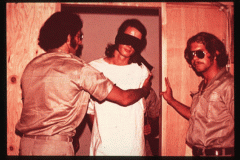
The research project looked at the mentality of prisoners and correctional staff, Zimbardo wanted to see if his participants would conform to their roles as guards or prisoners.
|
|

How was Zimbardos research organised? |

A mock prison was built in the basement of Stanford University and a group of 24 male white volunteer university students were randomly allocated the role of prisoner or guard.
Participants paid $15 a day to take part in a two week study of prison life. The participants were checked by a doctor to make sure they were healthy both physically and mentally. The 24 participants did not know each other prior to the study. |
|

What were the rules of Zimbardos reasearch for participants? |

The guards were allowed to make up the rules but no physical aggression was allowed.
The prisoners remained in the mock prison for 24 hours a day, and the guards worked on an 8 hour shift – allowing them to return home at the end of their shift. The prisoners were given numbers to memorise and referred to by number and supervised all the time. Prisoners were also given work shifts and had to line up to be counted. The guards wore khaki shirts and trousers, dark glasses and carried wooden batons. |
|

What did the research by Zimbardo into how people conform to social roles find? (guards) |

The guards took to their roles with such enthusiasm that the study had to be stopped after six days (it was supposed to last 14 days). The guards behaviour towards the prisoners had become so terrible and inhumane, it was clear they had become immersed into their prison guard roles.
|
|

What did the research by Zimbardo into how people conform to social roles find? (prisoners) |

Five prisoners had to be released earlier because of extreme emotional depression. Other prisoners were crying and anxious because they were continuously woken during the night, deprived of basic human rights and forced to perform degrading exercises for the guards own amusement.
|
|
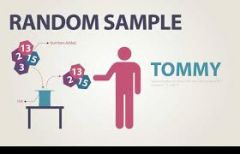
What is the advantage of the research by Zimbardo into how people conform to social roles? |
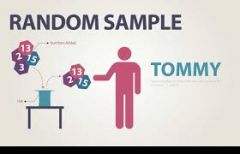
The method in which the experiment was carried out was very good because the participants were randomly given the role of “prisoners” or “guards”. If the participants had been allowed to choose which role they wanted, it could have been argued that the aggression of the guards was due to their personality rather than a demonstration of how ordinary people respond to roles.
|
|

What is the advantage of the research by Zimbardo into how people conform to social roles? |

The study by Zimbardo was well conducted because the screening process made sure that the participants were not unstable, therefore, none would have ultimately behaved in a really psychotic way.
|
|

What are the disadvantages of the research by Zimbardo into how people conform? |

The study by Zimbardo was conducted in a fake “prison”, this is an artificial environment; the study therefore lacks ecological validity and cannot be applied to real life.
b. The study by Zimbardo has also been criticized in terms of ethics, there was a lack of fully informed consent by participants, and the humiliation and distress experienced by those who acted as “prisoners” is also wrong. |

